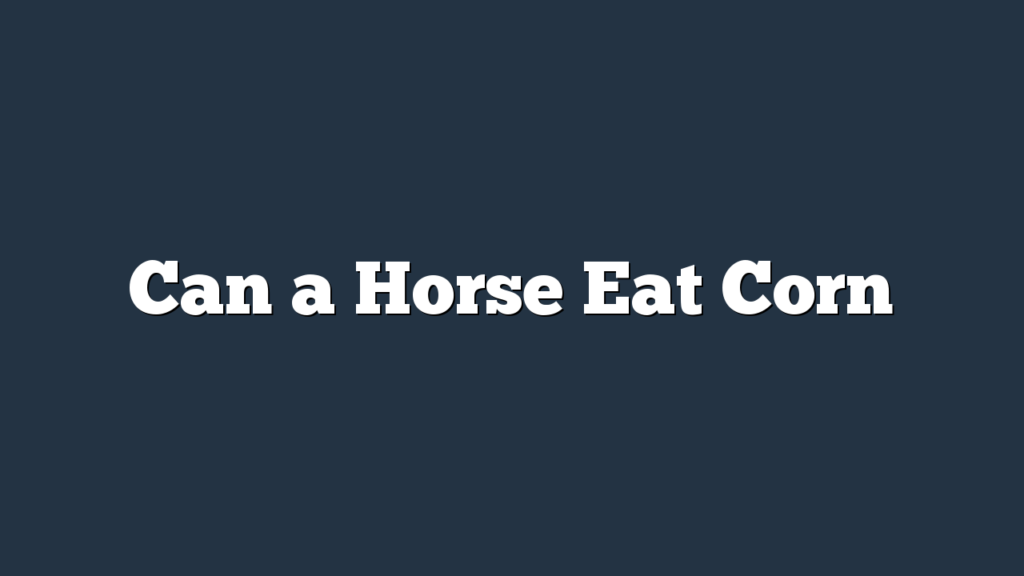Do you ever wonder if your horse needs hay even if it has access to grass? Find out the answer in this article.
Learn about the nutritional differences between grass and hay, factors to consider when assessing grazing conditions, potential health issues of grazing on grass alone, and the benefits of supplementing grass with hay.
Discover how to determine the right amount of hay for your horse and ensure a balanced diet for your grazing companion.
The Role of Hay in a Horse’s Diet
Hay plays an essential role in your horse’s diet, providing necessary nutrients and fiber for their overall health and well-being. While grass is a primary source of forage for horses, it may not always meet their nutritional requirements. Hay serves as a supplement, ensuring that your horse receives a balanced diet. It contains essential vitamins, minerals, and proteins that may be lacking in grass alone.
Moreover, hay provides an alternative forage source when fresh grass is scarce or unavailable. In certain seasons or climates, the quality and quantity of grass may decrease, making it necessary to rely on hay as the main source of roughage. By providing a consistent and reliable food source, hay helps maintain your horse’s digestive health.
Additionally, hay offers a variety of benefits beyond nutrition. Its fibrous nature promotes proper digestion and helps prevent issues such as colic and gastric ulcers. Chewing on long-stemmed hay also aids in the natural wear of your horse’s teeth, reducing the risk of dental problems.
Nutritional Differences Between Grass and Hay
When it comes to the nutritional differences between grass and hay, there are several key points to consider.
Firstly, grass is generally higher in moisture content, which makes it more easily digestible for horses.
However, hay often has a higher nutrient content due to the drying process, making it a more concentrated source of nutrients.
Therefore, when deciding between grass and hay for your horse’s diet, it’s important to consider their specific dietary needs and consult with a veterinarian or equine nutritionist for guidance.
Grass Vs. Hay Nutrition
If you’re wondering about the nutritional differences between grass and hay, it’s important to understand that grass offers a more varied and natural source of nutrients for horses. Here are the key points to consider:
- Hay vs. pasture nutrition: While hay can provide essential nutrients, it may not be as fresh or nutrient-dense as pasture grass. Pasture grass is more likely to offer a balanced diet for horses.
- Grass vs. hay forage quality: Grass has higher moisture content compared to hay, which can aid in digestion. Additionally, fresh grass contains more vitamins and minerals, providing a greater nutritional benefit.
- Variation in nutrients: Grass contains a wider range of nutrients compared to hay, including beta-carotene, omega-3 fatty acids, and vitamin E. These nutrients contribute to overall health and well-being.
- Digestive health: The natural moisture and fibrous structure of grass help maintain optimal digestive function, preventing issues such as colic or impaction.
Digestibility and Nutrient Content
To further understand the nutritional differences between grass and hay, it’s important to delve into the digestibility and nutrient content of each, giving you a clearer perspective on the topic.
Digestibility factors play a crucial role in determining the nutritional value of forage. Grass, being fresher and more succulent, generally has higher digestibility than hay. This means that horses can extract more nutrients from grass compared to hay.
Additionally, the nutrient content of grass can vary depending on grazing management. Factors such as pasture rotation, fertilization, and overall quality of the grass can impact the nutrient profile.
On the other hand, hay is often harvested at a specific stage of growth, resulting in a more consistent nutrient content. It’s important to consider these factors when deciding whether horses need hay in addition to grass.
Dietary Considerations for Horses
Consider the dietary differences between grass and hay to ensure your horse receives the necessary nutrients for optimal health and performance. While both grass and hay are important sources of nutrition for horses, there are some key variations to keep in mind. Here are four important factors to consider when it comes to the nutritional requirements and feeding recommendations for your horse:
- Digestibility: Grass tends to be more easily digested by horses compared to hay, which can vary in quality and fiber content.
- Nutrient content: The nutrient content of grass can change depending on factors such as season, soil quality, and grazing management. Hay, on the other hand, can provide a more consistent source of nutrients, especially if it’s well-made and of good quality.
- Energy levels: Grass tends to be higher in energy content compared to hay, which can be beneficial for horses with higher energy requirements, such as performance horses or those in intense training.
- Mineral balance: While both grass and hay can provide essential minerals, the mineral content can vary. It’s important to consider the specific mineral needs of your horse and supplement accordingly.
Factors to Consider When Assessing Grazing Conditions
Assessing the grazing conditions involves observing factors that affect the availability and quality of grass for your horses. It is crucial to consider pasture rotation as one of the key factors in grazing management. Pasture rotation involves dividing the grazing area into smaller sections or paddocks and rotating the horses between them. This practice allows the grass to recover and regrow, preventing overgrazing and ensuring a continuous supply of fresh and nutritious grass for your horses.
Implementing pasture rotation helps maintain a healthier pasture with a higher quality of grass. It also prevents the depletion of essential nutrients from the soil, as horses tend to selectively graze certain areas. Rotating the horses between paddocks ensures a more even distribution of grazing pressure, allowing the grass to recover and regrow more effectively.
Monitoring the grazing conditions involves assessing the overall grass height and density. If the grass is too short or sparse, it may indicate overgrazing and the need for pasture rotation. The presence of weeds should also be considered, as they can reduce the overall quality of the pasture. Regularly inspecting the pasture for signs of compaction, erosion, and drainage issues is important to maintain healthy grazing conditions for your horses.
Potential Health Issues of Grazing on Grass Alone
Grazing on grass alone may lead to nutritional deficiencies in horses, as grass may not provide all the necessary vitamins and minerals they need. This can result in various health issues, including weakened immune system, poor coat condition, and reduced energy levels.
Additionally, relying solely on grass can increase the risk of colic, a potentially life-threatening condition for horses.
Nutritional Deficiencies in Grass
If horses rely solely on grass for their nutrition, they may experience potential health issues due to nutritional deficiencies in the grass. While grass is a natural and essential part of a horse’s diet, it may not always provide all the necessary nutrients for optimal health. Here are four key reasons why nutrient deficiencies in grass can lead to health problems for horses:
- Lack of essential vitamins and minerals: Grass alone may not provide sufficient amounts of vitamins and minerals required for a horse’s overall well-being.
- Imbalance of nutrients: The nutrient composition of grass can vary depending on factors such as soil quality and climate, leading to imbalances in essential nutrients.
- Limited availability of certain nutrients: Grass may lack specific nutrients, such as omega-3 fatty acids or certain amino acids, which are important for a horse’s immune system and muscle development.
- Forage quality: Not all grasses have the same nutritional value. Some grasses may have lower forage quality, which can result in inadequate nutrient intake for horses relying solely on grazing.
To ensure a horse’s nutritional needs are met, it’s important to supplement their diet with hay or other forms of forage that can provide a more balanced and complete nutritional profile.
Risk of Colic
To minimize the risk of colic, it’s crucial for you to supplement your horse’s diet with hay or other forms of forage in addition to grazing on grass. While grass is a natural part of a horse’s diet, relying solely on it can increase the risk of colic, a potentially life-threatening condition.
Risk factors for colic include sudden changes in diet, limited access to water, and grazing on pasture with high sugar content. By providing your horse with hay, you can help prevent colic by ensuring a consistent source of high-quality forage. Hay provides essential fiber that aids in digestion and helps maintain a healthy gut. Additionally, it helps regulate the horse’s intake, preventing overconsumption of rich grass.
Taking these prevention measures is essential for the overall health and well-being of your horse.
Benefits of Supplementing Grass With Hay
You should consider supplementing your horse’s grass intake with hay to provide additional nutritional benefits. While grass is a great source of forage for horses, it may not always provide all the necessary nutrients they need. Here are four reasons why supplementing grass with hay can be beneficial:
- Increased fiber: Hay is a great source of fiber, which is essential for maintaining a healthy digestive system in horses. It helps prevent issues like colic and keeps their gut functioning properly.
- Nutritional variety: Hay can provide a wider range of nutrients compared to grass alone. Different types of hay, such as alfalfa or timothy, offer varying levels of protein, vitamins, and minerals, ensuring your horse gets a well-rounded diet.
- Extended grazing time: By providing hay as a supplement, you can extend your horse’s grazing time. This helps keep them occupied and prevents boredom, which can lead to destructive behaviors.
- Forage alternatives: In situations where grass may be limited or unavailable, hay serves as an excellent alternative. Whether it’s during the winter months or when traveling to different locations, having hay on hand ensures your horse always has access to forage.
Supplementing grass with hay can be a simple and effective way to enhance your horse’s diet and ensure they receive the necessary nutrients for optimal health.
How to Determine the Right Amount of Hay for Your Horse
To accurately determine the appropriate amount of hay for your horse, regularly assess their dietary needs based on the frequency of their activity level. Determining hay requirements involves considering factors such as the horse’s age, weight, and overall health. Hay supplementation benefits horses by providing essential nutrients, maintaining digestive health, and preventing boredom.
One effective method to determine the right amount of hay for your horse is to use the body weight percentage guideline. This guideline recommends feeding horses 1.5-2.5% of their body weight in hay per day. However, it is crucial to monitor your horse’s weight and adjust the hay amount accordingly to prevent obesity or malnutrition.
Another way to assess hay requirements is by considering the horse’s activity level. Horses with low activity levels may require less hay compared to those with high activity levels. The table below provides a general guideline for determining hay requirements based on activity level:
| Activity Level | Hay Requirement |
|---|---|
| Light | 1.5% of body weight |
| Moderate | 2% of body weight |
| Heavy | 2.5% of body weight |
Regularly monitoring your horse’s body condition and consulting with a veterinarian or equine nutritionist can help ensure you are providing the right amount of hay for your horse’s specific needs. Remember, hay serves as a valuable supplement to grass and plays a crucial role in maintaining your horse’s overall health and well-being.
Ensuring a Balanced Diet for Your Grazing Horse
Maintaining a balanced diet for your grazing horse involves ensuring they receive the necessary nutrients from a combination of grass and supplemental feed. While grazing conditions can provide a significant portion of your horse’s dietary needs, it’s essential to consider the following to ensure their overall health and well-being:
- Assess the quality of the grazing area: The nutritional content of the grass your horse consumes depends on the quality of the grazing area. Factors such as soil fertility, grass species, and seasonal variations can affect the nutrient levels. Regularly monitor the condition of the grazing area to ensure your horse has access to high-quality grass.
- Evaluate your horse’s body condition: Regularly assess your horse’s body condition score to determine if they’re maintaining a healthy weight. If they’re losing weight or not meeting their nutritional requirements solely through grazing, it may be necessary to provide supplemental feed to ensure they receive the necessary nutrients.
- Consult with a veterinarian or equine nutritionist: Seeking professional advice is crucial in designing a balanced diet for your horse. They can analyze the grazing conditions and your horse’s specific needs to recommend the appropriate type and amount of supplemental feed.
- Monitor your horse’s overall health and behavior: Regularly observe your horse for any signs of nutritional deficiencies or imbalances. Changes in coat quality, hoof condition, energy levels, and digestion can indicate the need for adjustments in their diet.
Frequently Asked Questions
How Much Hay Should I Feed My Horse if They Have Access to Grass?
If your horse has access to grass, you may need to gradually transition them from hay to grass. Monitor their weight to ensure they’re not losing too much. Consult a veterinarian for guidance.
Can Horses Survive on Grass Alone?
Horses can graze all year, but it’s important to supplement their diet with hay. Hay provides additional nutrition, helps maintain weight, and allows for grazing during periods when grass may not be available.
What Are the Potential Health Risks Associated With Grazing on Grass Alone?
Without hay, horses grazing on grass alone may face potential digestive issues due to the lack of fiber, as well as nutrient deficiencies. It is important to provide a balanced diet to ensure their overall health and well-being.
Are There Any Nutritional Differences Between Grass and Hay?
The nutritional value of grass and hay differs, affecting your horse’s digestive health. While grass provides fresh nutrients, hay offers a more consistent diet. Incorporating both can ensure a balanced diet for your horse.
What Are the Benefits of Supplementing Grass With Hay?
Benefits of supplementing grass with hay include providing additional fiber, especially during winter when grass is scarce. Hay can also prevent boredom and promote a slower eating pace. Drawbacks may include higher cost and potential for mold or dust.
Conclusion
In conclusion, while horses can survive on grass alone, providing them with hay can ensure they receive a balanced diet.
Hay offers additional nutrients and fiber that may be lacking in grass, and can help prevent potential health issues.
It’s important to assess grazing conditions and determine the right amount of hay to supplement with grass.
By doing so, you can ensure the overall health and well-being of your grazing horse.



